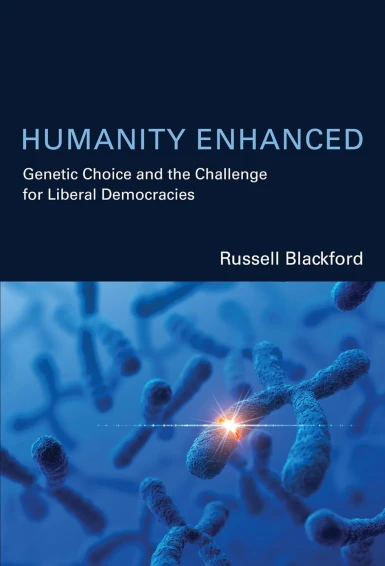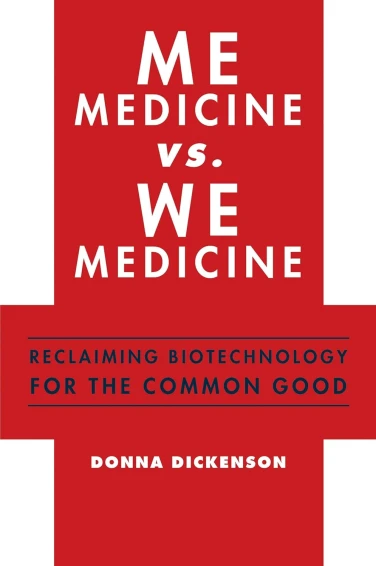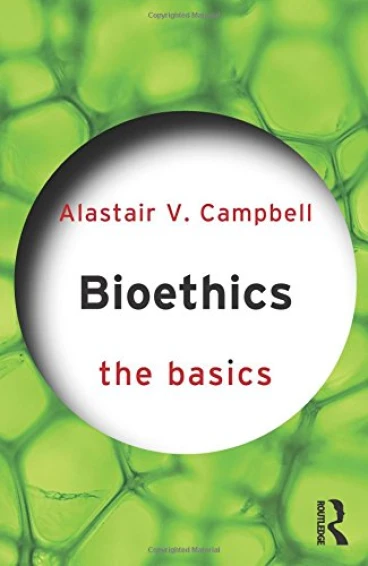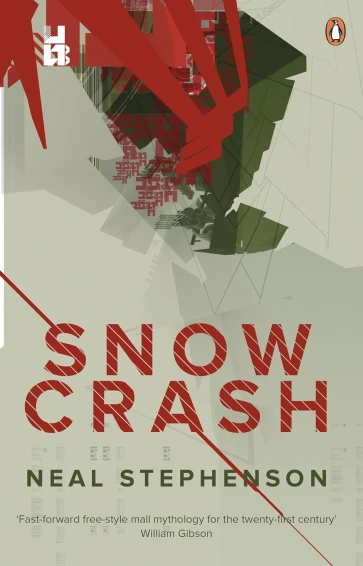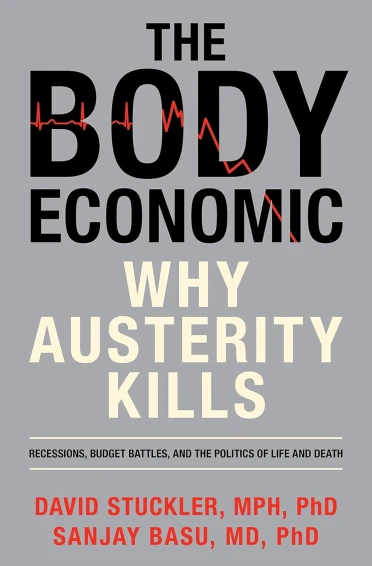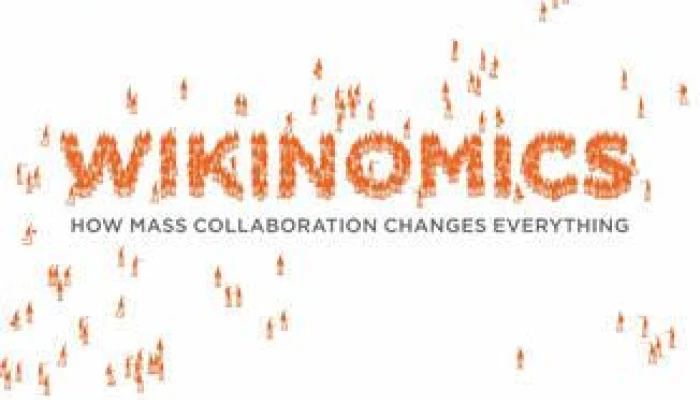
By Donald Tapscott & Anthony D. Williams
Atlantic Books
ISBN 978-1-84354-637-5
Wikinomics certainly has earned much praise and several awards since its release. The book has become an international bestseller and won both the Economist and Financial Times Book of the Year. Probably owing to its success and awards, in June 2008 it was fully revised and updated for paperback release.
Whilst not a predominantly bioethics focused book, it nevertheless covers themes and questions which have direct implications and relevance to discussions pertaining to new emerging technologies and their development.
Don Tapscott and Anthony Williams have written an interesting and engaging volume consisting of eleven well written chapters supported by interesting facts and stories. The book explores the possibilities of mass collaboration and explains how this ubiquitous technology we all know as the Internet is revolutionising the way in which we cooperate and live out our lives.
Clearly the book is written by advocates of the Web 2.0 lifestyle and at certain points in the book this comes through too strongly. Opposing perspectives could have been presented more often and in more detail. In this reviewer’s opinion, it would have added to the strength of the thesis, as opposed to weakening it.
Consequently the book constitutes a mix of roles. On the one hand, it acts a guide and commentary on the advent and working of Web 2.0, particularly of use who do not readily ‘get’ the concept of wish to know more. On the other hand, it is also a manifesto for Web 2.0 and all that it promises to the world. Thus at points there is a tendency for grand, sweeping statements to be made which are not properly founded. For example, is the blogosphere really allowing the younger generation to be become more critical thinkers in the way the authors suggest? Are the dangers of social networking so over hyped that in fact more is written about the dangers theoretically, in comparison with the number of cases which actually take place?
Wikinomics
So what of wikinomics? What do they mean by the term? There is no better illustration from which to elicit a definition than the one the book opens with concerning Goldcorp. One of the strengths of the book is the useful and effective use of real life stories. These illustrations provide a helpful means by which to demonstrate the applications of principles and ideas the authors write about. The story of Goldcorp is no exception. Goldcorp Inc. is a small Toronto based gold mining firm which was in urgent need of finding more gold. Besieged by strike, debts lingering over the company and increasing costs of production all factored together resulting in mining from ceasing. With the gold industry generally in decline, Goldcorp was in real need of finding new gold deposits with which to mine. As tensions in the company rose over the best course of action for the company to take, Rob McEwen, CEO of Goldcorp made a radical decision which could have either committed the company to certain death or released it into a new era of activity and life. He took the radical step of putting the entire firm’s geology data on file online in order to share it with the world. McEwen would then ask the world where they thought the next 6 million ounces of gold were to be found!
This was without doubt a controversial and risky move to make. Nevertheless, the Goldcorp challenge was launched with $573,000 million in prize money being put up. The result was an amazing success. 110 target sites were identified with more than 80% of those areas yielding substantial quantities of gold. McEwen reckons that the collaborative process shaved 2-3 years of the normal exploration time. As a result the firm moved from an underperforming $100 million company to a thriving $9 billion business.
Mass collaboration
This one story helps to exemplify the main premise of the book – mass collaboration. Tapscott and Williams argue that this form of collaboration is changing how goods and services are invented, produced, marketed and distributed on a global basis. Previously, this kind of collaboration only took place on a small scale but more recently it has shifted to the global scale, giving power to link up networks of peers to produce goods and services.
But collaboration and the term ‘mass collaboration’ is nothing new. Is it? This is precisely what CEO of Google, Eric Schmidt recognises. Schmidt comments that the average 45 year old would not consider this to be a new term of but merely recognise it as something that already takes place. It would take the form of a team sitting down in order to have a nice conversation with nice objectives and nice attitudes. However, this is not what Tapscott and Williams are advocating at all. They are referring to a dramatically difference kind of mass collaboration; one that is focused around peer production which harnesses human skill, ingenuity, intelligence more efficiently and effectively.
The key power source behind such collaboration is the Internet. Call it what you will – web 2.0, hypernet, active or whatever, the Internet is providing the context for this new means of acting and relating. Whereas the old web could be said to all be about sites and clicks, the new web is all about communities, participation and peering. The new web represents internetworked constellations of disruptive technologies. The web forms a robust platform yet for fascinating and accelerating new creative disruptions. Knowledge, people, objects and intelligent agents are converging in many-to-many networks where new innovations and social trends spread with viral intensity.
Emerging technologies
Despite the book often being classified as a ‘business’ book by book stores, this idea of mass collaboration (as the name suggests) is something which surpasses disciplinary boundaries and categorisation. Those familiar with the area of emerging technologies will be familiar with the acronym NBIC (nanotechnology, biotechnology, information technology and cognitive science) used to identify the symbiotic relationship between these new technologies. As one looks to the future it is not so much a case of brand new technologies spawning more new technologies but much more a case of convergent technologies. Such technologies point to a leap towards a much broader and powerful platform combining these different scientific approaches and their technological applications. More accurately one could talk in terms of a revolution taking place very similar to that of the first industrial revolution that reshaped life in society in a radical way.
Consequently, Wikinomics offers a helpful insight and picks up on this theme of convergence and collaboration. Business and industry are key stakeholders in any conversation to be had concerning the application of emerging technologies and thus to have a book prepared from a business perspective offers a useful commentary and reflection from this particular side of the conversation.
This connection with science and business is particularly picked up in chapter six of the book. The chapter looks at the science of sharing and how this helps to rapidly accelerate and augment efforts to promote and advance human health. In this age of collaborative science, the authors highlight that there becomes a rapid diffusion of best practice techniques and standard; stimulation of new technological hybrids and recombinations; positive feedback loops from public knowledge to promote enterprise and horizontal and distributed models of research and innovation.
The Human Genome Project
Within this context, Tapscott and Williams describe as the emergence of the new Alexandrians. These are individuals, companies and organisations that recognise the power and importance of openness in today’s economy.
A great example of this is the Human Genome Project. This project would not have been possible without the internet and emergence of increasingly distributed systems for aggregating, reviewing and disseminating knowledge. The authors do not doubt nor will question the need for scientific inquiry which is by its nature is a slow and methodical process but as the pace of science increases the authors see little value in stashing ideas, methods and results in subscription only journals. More value in wide open collaborative knowledge platforms refreshed with new, ongoing discoveries.
The Human Genome Project represents a watershed moment when a number of pharmaceutical firms abandoned proprietary human genome projects to back one collaboration. Without new insights and advances in underlying disciplines the stock of knowledge becomes stale. In essence, the well of knowledge dries up, which in turn affects the rate and quality of innovation.
Mass production
The change to how production takes place is discussed in chapter three. In this mass collaboration era, the mode of production is a way of producing goods and services that rely entirely on self-organising, egalitarian communities of individuals who come together voluntarily to produce a shared outcome.
Here the authors cite the Wikipedia entry for the 7th July London terror attacks. As many contributors provided information, adding and amending entries to the page, by the time USA news channels were covering the story for morning new bulletins, the Wiki page became one of the most up-to-date and comprehensive sources on the web for information on these tragic events. Essentially the content improved as it under went iterations of changes and edits, representing a type of Darwinian evolutionary process.
At this juncture the authors tackle one of the main criticism of Wikipedia, that of inaccuracy. They cite a comparative analysis the journal Nature carried out on 42 science entries in Wikipedia and Encyclopaedia Britannica. Interestingly, it found that there were relatively small differences with Wikipedia containing four inaccuracies per entry to Britannica’s three. In response Britannica disputed the findings claiming that the errors in Wikipedia were more serious than Britannica and that the study used the Junior versions and Britannica year books.
Commenting on these results, Tapscott and Williams argue that the response from Encyclopaedia Britannica misses the point. The errors cited in Wikipedia have long since been fixed, whilst the errors in Britannica remain!
Inaccuracy
For some, including this reviewer, any volume which has the wiki- prefix immediately sets alarm bells ringing. Thoughts of the online encyclopaedia, Wikipedia, spring to mind and associated thoughts of inaccuracies, unreliability and the need for caution where engaging with information derived from the site. If you share the same kind of apprehension this book will be particularly helpful as it could help to burst some of the preconceptions surrounding Wikipedia and open up some new perspectives on the Wikipedia phenomena and what it presents for the future.
This is not to say that the flaws which many identify with the use of Wikipedia for accurate information mining are unfounded. The authors do not dispute that they exist but in fact turn the issue around and use it to illustrate the fact that this represents the dynamic of wikinomics. The word wiki is actually Hawaiian for ‘quick’ and it this quickness and easy by which people can put up information which alarms certain groups of people.
It is not usual to come across those who consider the wiki- phenomena and Wikipedia particularly, as the enemy of expertise and destroyer of wealth and property. As opposed to the ‘wisdom of the crowd’, some antagonists perceive crowds to produce ignorance and no wisdom.
In chapter 10, the authors tackle this issue identifying this idea that institutions need gatekeepers; people who have a high and well respected level of credibility and are entrusted by society to preserve core traditions and values and standards of practice. Consequently, if these gatekeepers are removed, all that will be left is nonsense and amateur drivel.
Not surprisingly, Tapscott and Williams posit that in fact the opposite would occur. Referring to the work of Chris Anderson, author of “The Long Tail”, the wikinomic effect would mean a greater defining of talent and expertise. Web 2.0 will actually cause our cultural economies to grow more robust and vital.
“Opportunity to discover and nurture new Mozarts among a billion connected individuals is greater now than in a world where the fate of talented individuals depended on their ability to get noticed by a A&R representative from a major music label”, p. 273.
In terms of the accuracy question, Andrew Keen’s argument that nothing is vetted for accuracy is a flawed argument according to the authors. Citing the findings of Stanford law professor Laurence Lessig, the authors argue that who have supposedly met high standards of trust imposed by publishers can still be flawed sometimes deeply – in their thinking and ideas. Just because their ideas get to the printed stage does not mean they are any more flawless or accurate than the blog post.
Whilst this is a response of some measure, to this reviewer it is still lacking some substance. The speed (‘wiki’-ness) by which a wiki entry can be made is somewhat different to the process of submitting a manuscript to a peer review board before printing. Yet could such a review board exhibit prejudice towards the author (either positively or negatively) and their work? This could be on the grounds of background, status, class or financial incentive etc? In which case, a wikipedia entry could as an alternative constitute a more democratic and authentic response with the review process being undertaken by the demos and not a select few.
This line of thinking leads the authors to conclude that decentralised forms of content production can allow for greater reliability and accuracy. Luca de Alforo, associate professor of computer engineering at University of California, Santa Cruz, suggests a possible mechanism for monitoring. Basically, if your contribution lasts, so does your reputation. If a contribution is reverted to a previous version, your reputation falls. In order to protect those who do not contribute as often, Alforo would advocate hiding the reputation ratings of individual users.
This is clearly a matter which can be debated at much greater length and will require consideration as future technologies progress. Nevertheless, it would have strengthened the book’s scope to have explored and discussed this idea further.
Conclusion
Wikinomics is a helpful read to anyone who wishes to gain an overall understanding of the way in which web 2.0 is revolutionising and will continue to challenge and remodel the way people interact and business is conducted. It has to be read with a degree of open-mindedness as it points the book can too easily slip into over selling the positives whilst dismissing the negatives. It nevertheless constitutes an excellent book, supported with some great stories and illustrations, to encourage further engagement and debates on where the future is taking us. Clearly it is one of collaboration and convergence in so many different ways. If this is the case, then collaboration will most definitely be required in helping to shape what lies ahead. Whilst not a predominantly bioethics oriented book, Wikinomics highlights and touches on issues which transcend the neat and tidy categories and boundaries which we erect in our lives. A book that is well worth reading and not to be missed.




